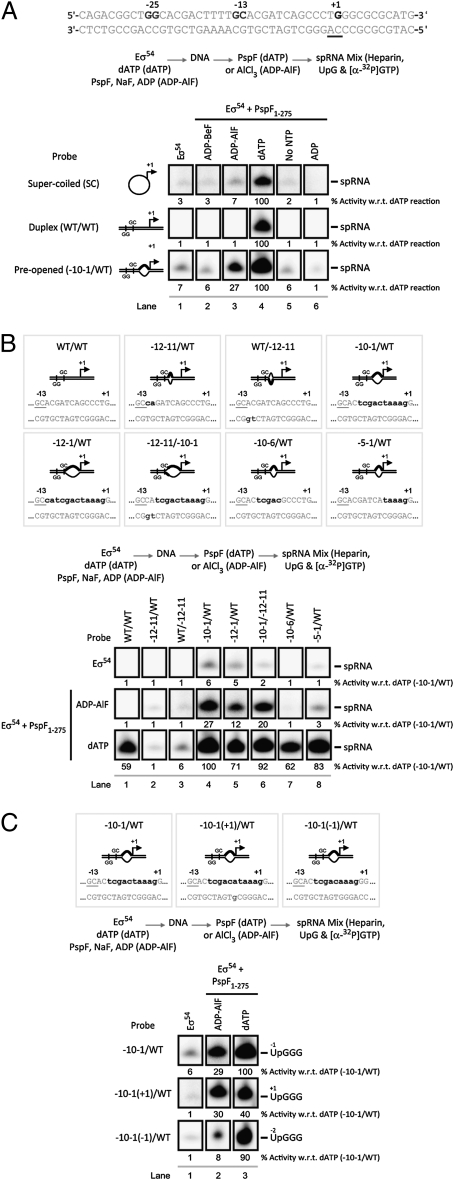Fig. 1.
ADP-AlF supports spRNA synthesis on preopened promoter templates. Denaturing gels showing (A) that synthesis of the spRNA product (UpGGG) occurs in the presence of ADP-AlF (lane 3) only with the preopened (−10–1/WT) probe, contrasting results obtained with dATP (lane 4). Control reactions with: no activator ATPase (lane 1); an alternative nonhydrolyzable ATP analog (lane 2, ADP-BeF); no nucleotide, demonstrating the activator is not hydrolyzing GTP from the spRNA mix to form competent complexes (lane 6, No NTP); and no trapping reagents (lane 6, ADP). (B) The template requirements for spRNA synthesis for both ADP-AlF- and dATP-dependent complexes. (C) The organization of the RNAP active site in the presence of ADP-AlF is more restricted because it cannot use the single-base-pair deletion [−10–1(−1)/WT] probe. In A–C, the reaction schematic is as illustrated. The nucleotide sequence of the S. meliloti nifH promoter with the consensus GG and GC and regions of mismatch (in bold) are depicted. The level of spRNA synthesis was quantified and expressed as a percentage of the spRNA synthesized in the dATP reaction.

